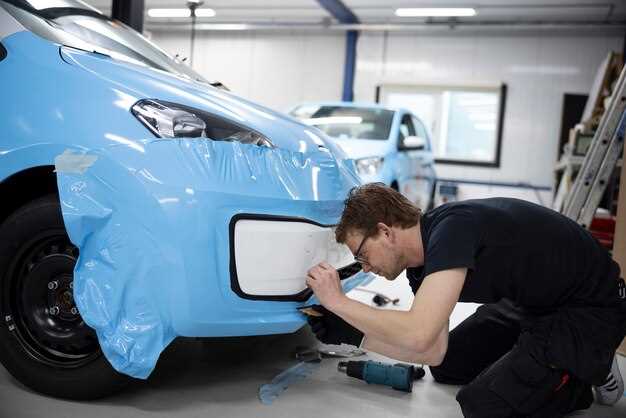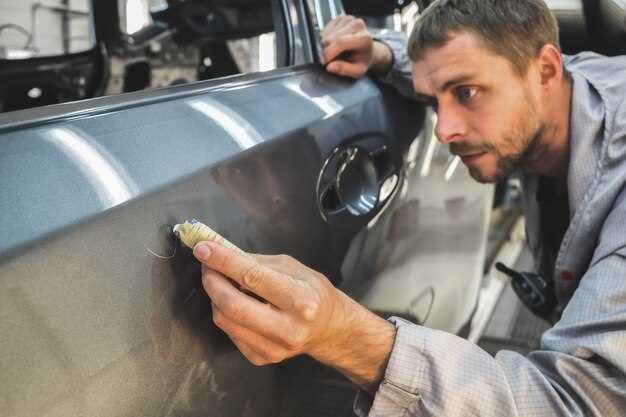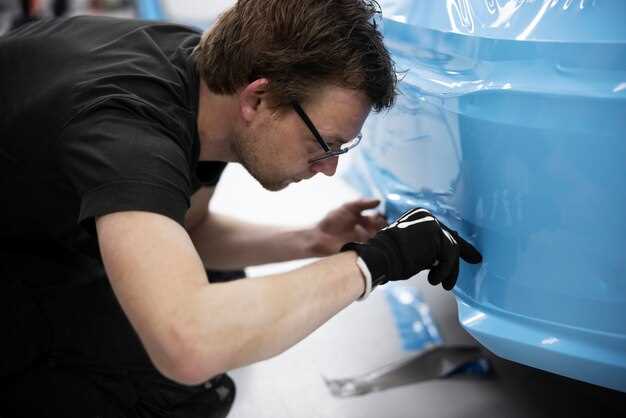
When purchasing a used vehicle, one of the primary concerns for buyers is the quality of body repairs previously performed on the car. Poorly executed body repairs can significantly impact the vehicle’s resale value and raise the overall risk associated with ownership. Understanding the signs of subpar repairs is essential for any savvy consumer looking to avoid future headaches and expenses.
Flaws in bodywork can manifest in various ways, from uneven paint finishes to misaligned panels. Not only do these issues detract from the car’s aesthetic appeal, but they can also indicate underlying structural problems that might jeopardize safety. Buyers should be vigilant and informed about the telltale signs of inferior repairs to safeguard their investment and ensure they are making a sound purchase.
This article aims to equip readers with the knowledge needed to identify the telltale signs of poorly executed body repairs, helping them navigate the complex world of used car buying with confidence. By recognizing these red flags, individuals can minimize risks and protect their financial interests.
Visual Indicators of Subpar Repair Work

When evaluating the quality of car repairs, several visual indicators can signal poorly executed work. One significant flaw to look for is mismatched paint. If the color or finish of the repaired area does not perfectly align with the original paint, it suggests that the repair was executed hastily or without proper matching techniques.
Another telltale sign is uneven panel alignment. Gaps or misalignments between body panels can indicate improper installation after repairs, leading to both aesthetic and functional issues. Inspect doors, hoods, and trunk lids to ensure they open and close smoothly, as well as align evenly with adjacent panels.
Rust is another critical concern; if a repaired area shows signs of corrosion or bubbling paint, it points to poor preparation or inadequate protective measures during the repair process. Rust can quickly spread, significantly diminishing a vehicle’s resale value.
Additionally, look for signs of overspray on unpainted surfaces such as windows, trims, or tires. This can be an indication that the repair was not done professionally, further confirming that shortcuts were taken during the process.
Lastly, take note of any body filler that may not have been applied correctly. If you can see or feel unevenness along a repaired surface, or if it feels excessively coarse or brittle, these are strong indicators of subpar repair work. Recognizing these flaws can save potential buyers from making a regrettable investment, ensuring they understand the true condition of the vehicle before resale.
Impact of Repair Flaws on Vehicle Resale Value
When it comes to selling a vehicle, the resale value is significantly influenced by the quality of past repairs. Flaws in body repairs can manifest in various forms, such as uneven paint, misaligned panels, or poor rust treatment. These issues not only compromise the aesthetic appeal of the vehicle but also serve as red flags for potential buyers.
Buyers are often wary of repair jobs that appear subpar, as they may equate these flaws with underlying problems or future complications. A vehicle that has retained its original parts and paint typically fetches a higher resale value. In contrast, vehicles with obvious flaws from previous repairs tend to see a reduction in market worth.
Moreover, documentation of repairs plays a crucial role in the resale process. If a vehicle has undergone extensive repair work due to an accident, but the restoration was poorly executed, it can deter interested buyers, leading to longer selling times and lower offers. Transparency about repair history is important, yet showing evidence of poor quality repairs can overshadow even comprehensive records of service and maintenance.
In summary, the presence of repair flaws directly impacts a vehicle’s resale value. Achieving high resale prices requires not only quality initial repairs but also maintaining the vehicle’s overall integrity and appearance. Potential buyers are likely to invest in vehicles that showcase high standards in restoration, ensuring a positive return on investment for sellers.
Common Mistakes to Avoid When Assessing Bodywork

When evaluating the quality of body repairs on a vehicle, certain common mistakes can lead to severe consequences, affecting the resale value and overall condition of the car. Understanding these pitfalls is essential for both buyers and sellers.
Overlooking Inconsistencies in Paint Finish
One of the most significant red flags is an inconsistent paint finish. If the color does not match across panels or if there are gloss variations, it may indicate that repairs were not conducted properly. Such discrepancies not only diminish the car’s aesthetic appeal but also pose a risk for potential corrosion in the long run.
Ignoring Panel Alignment
Misaligned body panels can signify subpar repair work. When doors, hoods, or fenders do not fit correctly, it raises concerns about the quality of the repair and can affect the vehicle’s functionality. Take the time to open and close all doors and compartments to ensure everything aligns seamlessly.
Neglecting to Check Underneath
Many buyers focus on the exterior while failing to inspect underneath the vehicle. Hidden damage may lurk beneath the surface, including welding defects or rust that could lead to future complications. A thorough examination of the chassis and undercarriage is vital to assessing the true state of the repair.
Discounting Structural Integrity
Structural problems often result from accidents that were inadequately addressed. Assessing the frame and body structure is critical. Look for signs of uneven wear or stress fractures that could pose a risk during operation. A compromised structure can significantly affect safety and performance, reducing resale value.
Skipping the Inspection of Seals and Adhesives
Proper repairs require the right use of seals and adhesives, especially in areas prone to moisture exposure. Failing to examine these elements can lead to water ingress, potentially resulting in mold or rust. Make it a point to check that these components are intact and properly applied.
By avoiding these common mistakes, you can make more informed decisions regarding vehicle bodywork and ensure that you protect yourself from potential risks associated with poorly executed repairs. Proper assessment not only improves the vehicle’s resale value but also safeguards your investment in the long run.






